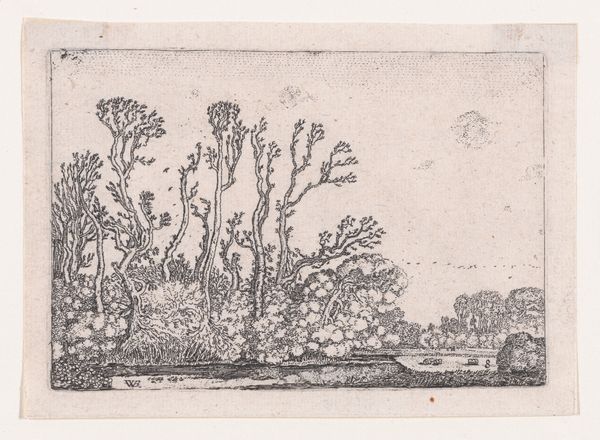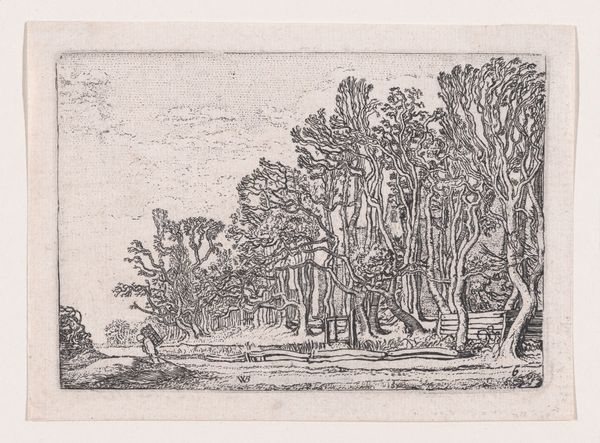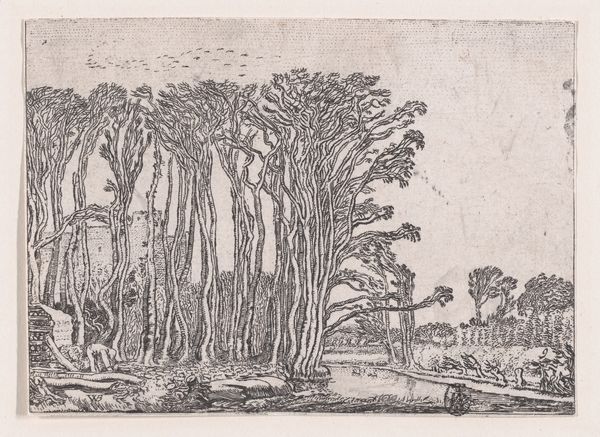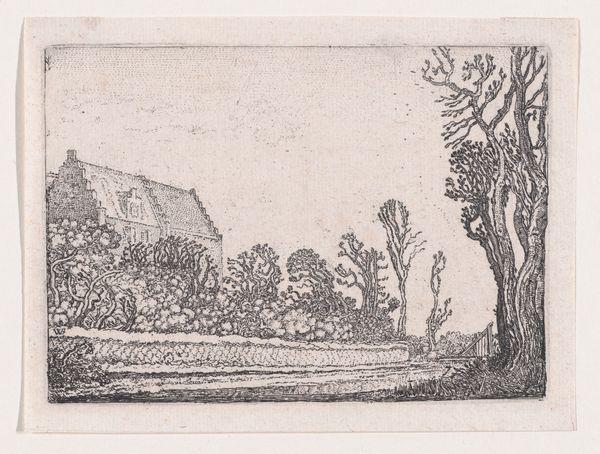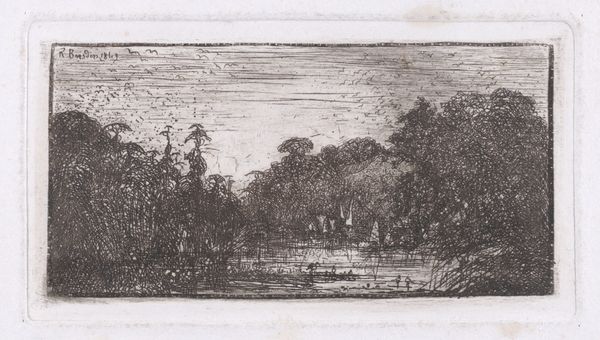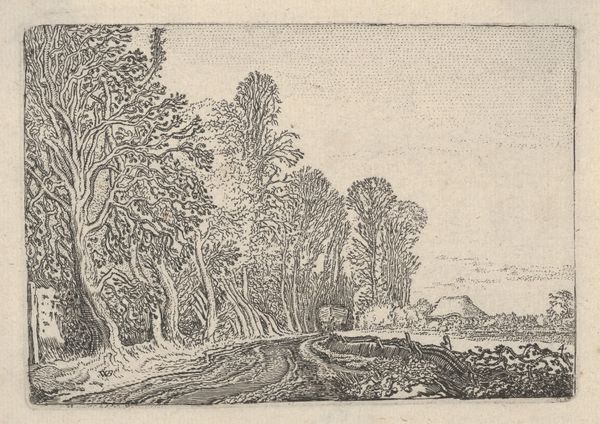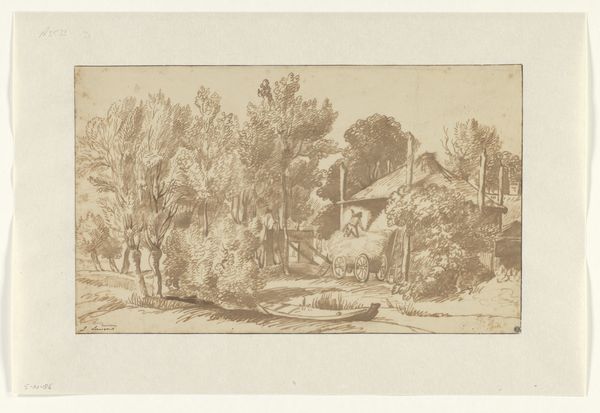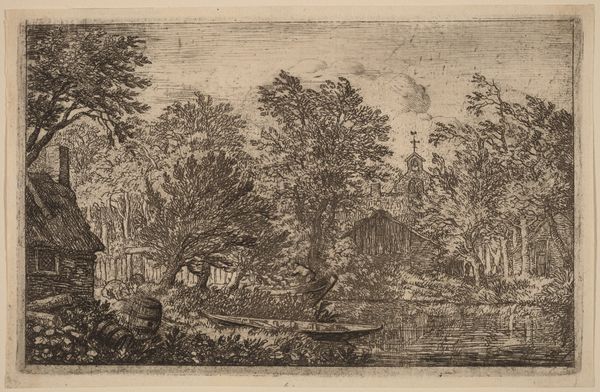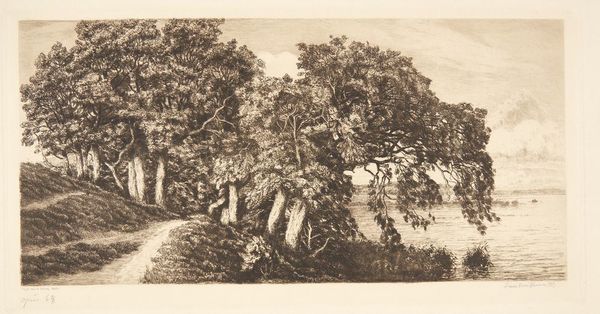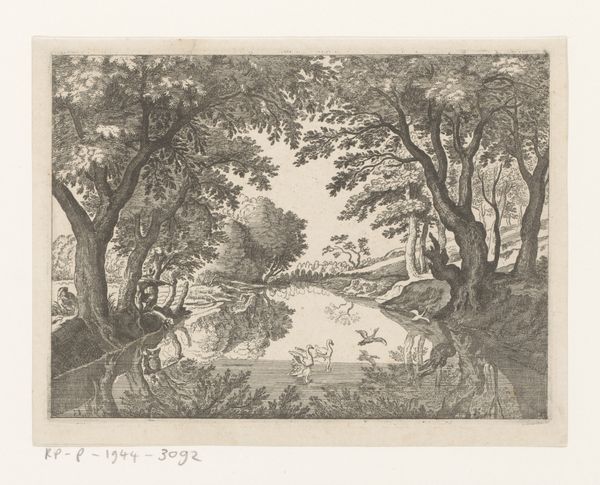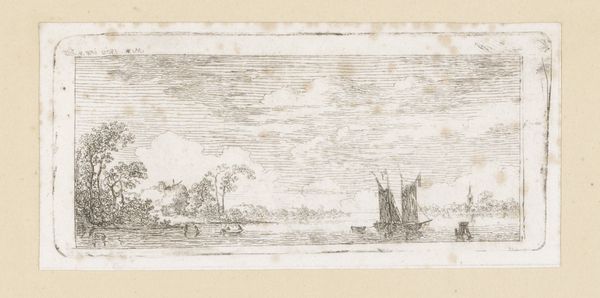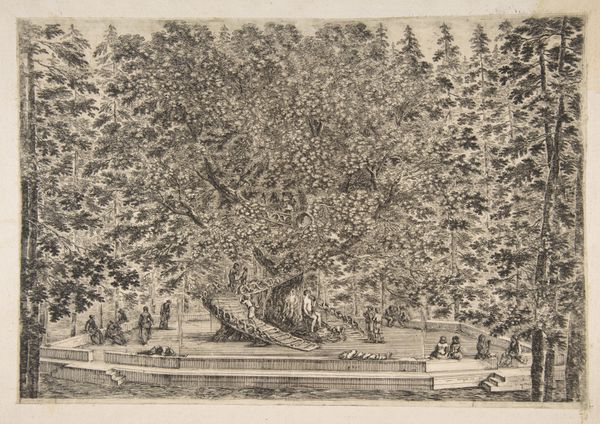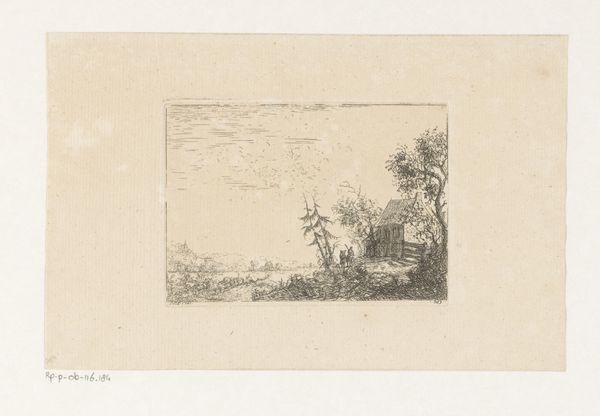
The Sower, from Verscheyden Landtschapjes (Various Little Landscapes), Plate 5 1611 - 1621
0:00
0:00
drawing, print, etching
#
tree
#
drawing
#
dutch-golden-age
# print
#
etching
#
landscape
#
northern-renaissance
Dimensions: Sheet: 4 in. × 5 7/16 in. (10.1 × 13.8 cm) Plate: 3 7/16 × 4 7/8 in. (8.7 × 12.4 cm)
Copyright: Public Domain
Curator: This serene landscape etching is "The Sower" from the series Verscheyden Landtschapjes, or "Various Little Landscapes," by Willem Pietersz. Buytewech, created sometime between 1611 and 1621. Editor: There's something haunting about it. The starkness of the lines, the almost skeletal trees, and the lone figure... it feels both pastoral and unsettling. It reminds me a bit of earlier Netherlandish painting but with an interesting directness of rendering, I wonder what sort of printmaking workshop might have produced something with so much atmospheric variance. Curator: The sower himself certainly anchors the composition and speaks to the fundamental connection between humanity and the earth. We see him walking, scattering seeds—an archetype of labor and provision found across cultures. Note how the gesture is nearly centered, it creates a grounding visual element and resonates within the deeper ideas of labor during this early moment in the Golden Age. Editor: Absolutely. The act of sowing itself is such a powerful image, rich with potential and the promise of sustenance, but I’m immediately drawn to the labor embedded in the material processes involved. Think of the copper plate itself, the labor of grinding it to a perfect polish, applying the etching ground, then Buytewech painstakingly incising the image with needles. Curator: A dance between man and nature! The lines, created by the etching, carry an emotional weight, echoing not only the sower's movement, but perhaps a larger societal hope. Remember this was a transformative period in Dutch history, coming out of war and building toward economic stability. We may look at this tranquil setting as a reminder that they literally cultivated their own safety. Editor: That transformation resonates. The stark contrasts created through the etching process serve to make me consider how those early chemical experiments allowed for wider production and, in effect, new consumers who could gain access to art previously unavailable, how novel, right? Curator: Exactly! It becomes more than just ink on paper; it's a reflection of their time. It almost serves as an enduring symbol for their industrious spirit! Editor: Ultimately, these processes demonstrate not only individual artistry but reveal new forms of creative enterprise for that time, in and outside of painter's ateliers. Curator: Very insightful observations, I think we've gained some beautiful new understanding looking through both ends of the telescope on Buytewech and his compellingly serene little print.
Comments
No comments
Be the first to comment and join the conversation on the ultimate creative platform.
